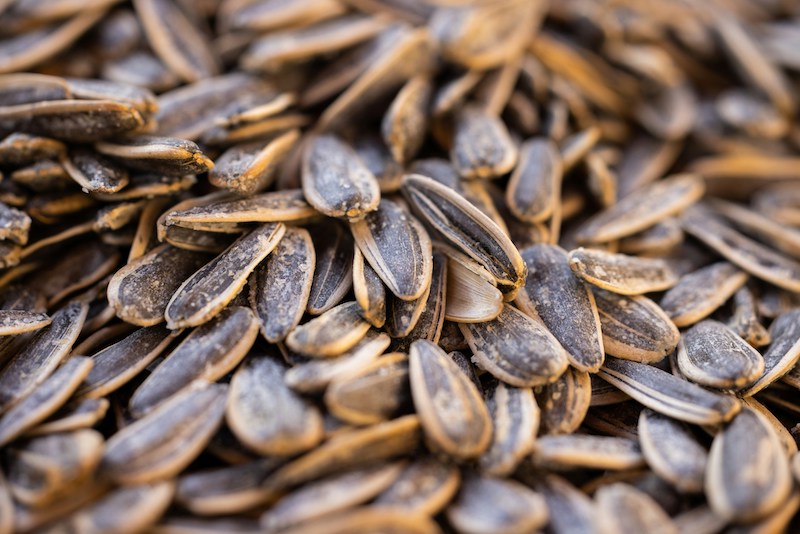Bannock Is A Versatile And Flavourful Bread
Bannock is a traditional type of bread that has been enjoyed for centuries. Its origins trace back to various Indigenous peoples of North America and Scotland. Today, it is beloved for its simplicity and versatility. People across the world now enjoy this delicious flatbread, which can be made in numerous ways.
What is bannock?
Bannock is a type of flatbread made from simple ingredients such as flour, water, salt, and sometimes fat. The dough is mixed, shaped, and then either fried, baked, or cooked over an open flame. Bannock’s versatility makes it an easy-to-make bread that can be adapted for various tastes and occasions. It is often served alongside stews, soups, or eaten on its own with butter or jam.
The history of bannock
Bannock has a rich history tied to both Indigenous cultures and European settlers. Indigenous peoples of Canada and the northern United States made variations of bannock using ingredients that were available in their environment. European settlers brought their own versions of bread-making, which influenced the development of bannock. Over time, bannock became a staple in many Indigenous and settler communities.
How bannock is made
The basic process for making bannock is simple and requires few ingredients. The dough is mixed together by hand, though some modern recipes use a food processor. The mixture is then shaped into a round or oval shape. Depending on personal preference, it can be fried, baked in an oven, or cooked over a campfire. The result is a soft, slightly crispy bread with a wonderful texture.
Different types of bannock
There are many different ways to prepare bannock, and its versatility shines through in these variations. One popular type is fried bannock, which results in a crispy exterior and soft interior. Another variation is baked bannock, which is cooked in the oven to create a fluffy, hearty bread. Bannock can also be prepared with additional ingredients, such as herbs, cheese, or fruit, for extra flavour.
Indigenous culture
In many Indigenous cultures, bannock holds a special significance. For Indigenous peoples in Canada, it became a common food during the fur trade era when they interacted with European settlers. The ability to create a simple, filling bread helped ensure that food was readily available during long winters or on journeys. Bannock recipes differ from one Indigenous group to another, each adding their own unique twist to the dish.
Sweet and savoury
Bannock can be enjoyed in both sweet and savoury versions. Sweet bannock may include ingredients like sugar, cinnamon, and berries. The sweet variations are perfect for breakfast or dessert, often served with honey or syrup. On the other hand, savory bannock recipes can feature herbs, cheese, or even meat, making it a hearty option for any meal. Its adaptability makes bannock a favourite for all types of flavours.
Cooking bannock over an open flame
The most traditional method of cooking bannock is over an open flame. This method is particularly popular when camping or during outdoor activities. The dough is typically shaped into a flat round shape and placed on a flat cooking surface, such as a cast iron pan. The heat from the fire gives the bannock a unique smoky flavour while creating a crisp, golden-brown crust.
Baking bannock in the oven
Baking bannock in the oven is a simple and convenient way to prepare this bread. To bake bannock, the dough is placed on a baking sheet and cooked at a moderate temperature. This method yields a soft, fluffy bread with a slightly crusty exterior. Baked bannock is often enjoyed as a side dish, accompanying soups or stews, or eaten on its own with butter or jam.
Crispy and delicious
Fried bannock is a variation that many people love for its crispy texture. The dough is shaped into small rounds and then fried in oil or fat until golden and crispy. Fried bannock is often served as a snack or dessert, sometimes dusted with sugar or cinnamon. Its rich, crispy exterior and soft inside make it a truly indulgent treat.
Herbed bannock for extra flavour
Adding herbs to bannock can elevate its flavor profile. Ingredients like rosemary, thyme, or oregano can be mixed into the dough for a savory version of this bread. The aromatic herbs add depth and complexity to the flavor, making it an excellent accompaniment to soups, stews, or grilled meats. Herbed bannock is also great when served with a variety of cheeses.
Cheese and other add-ins
For a richer and more indulgent bannock, cheese can be incorporated into the dough. Cheddar, mozzarella, or feta work wonderfully, giving the bread a deliciously savory and creamy taste. Additional add-ins, such as chopped vegetables or cooked bacon, can make the bannock a complete meal. This cheesy version of bannock is perfect as a side dish or a savory snack.
Indigenous traditions
In many Indigenous communities, bannock is more than just a meal. It is a food that brings people together during communal events, celebrations, and ceremonies. Bannock is often shared with family and friends, emphasizing its role in fostering a sense of connection. The simplicity of bannock also reflects the importance of using available resources wisely, a value that has been passed down through generations.
Fur trade era
During the fur trade era, bannock became a key food item for Indigenous people and European settlers alike. The bread’s simplicity made it easy to prepare in remote areas, and its long shelf life made it ideal for trading. Bannock became a common food source on long journeys, as it was easy to carry and required minimal preparation. Its place in this historical period solidified its role in Canadian culinary culture.
Versatility
The key reason bannock remains popular today is its versatility. It can be enjoyed as a simple, filling snack or transformed into an elaborate dish with various flavor add-ins. Bannock can be served at breakfast, lunch, or dinner. It can also be sweet or savory, making it adaptable to any occasion. This adaptability makes it a favorite in many households.
Making bannock at home
Making bannock at home is quick and easy, requiring only a few simple ingredients. You can experiment with different flours, such as whole wheat or gluten-free options, to suit your dietary preferences. Bannock is also perfect for beginners, as it does not require yeast or complicated kneading. The dough comes together quickly, and the bread can be cooked in a variety of ways, whether by frying, baking, or grilling.
Budget-friendly dish
Another appeal of bannock is its affordability. Made with inexpensive pantry staples, such as flour, baking powder, and salt, bannock can feed a family without breaking the bank. This makes it a great option for large gatherings, picnics, or budget-conscious families. Bannock is not only easy to prepare but also a cost-effective meal that can stretch ingredients further.
Serving Bannock with different dishes
Bannock pairs wonderfully with a variety of dishes, enhancing both savory and sweet flavors. It can be served alongside stews, soups, or salads. In more traditional settings, bannock may be eaten with butter, syrup, or jams. Its neutral flavor profile makes it an excellent base for adding other toppings or ingredients. Whether as a side or a main dish, bannock complements a wide range of cuisines.
Modern variations
In modern times, many chefs and home cooks have found creative ways to update bannock. New ingredients, like seeds, dried fruits, and alternative grains, are being added to give the bread a contemporary twist. While the basic recipe remains the same, people enjoy making bannock their own by experimenting with unique flavors and textures. These new variations keep bannock a relevant and beloved bread in kitchens around the world.
Bread for all occasions
Bannock fits any occasion. Its simplicity and versatility make it a timeless bread, loved by many. Bannock is a bread that brings comfort and joy, uniting people through the shared experience of its delicious taste. It continues to be a symbol of both tradition and innovation in the culinary world.
Global appeal**
Bannock’s rich history and adaptability have helped it transcend borders. It is enjoyed in many countries, from Canada and the United States to parts of Europe. The ability to make bannock with simple ingredients has made it a favorite of those seeking easy, satisfying bread recipes. As global interest in traditional foods grows, bannock continues to find new audiences around the world.
Timeless and delicious tradition
Bannock is more than a simple bread. It carries with it centuries of history, tradition, and innovation. From its roots in Indigenous cultures to its modern adaptations, bannock remains a cherished part of many culinary traditions. This versatile, flavorful bread continues to bring people together, creating memorable meals and experiences for generations to come.



